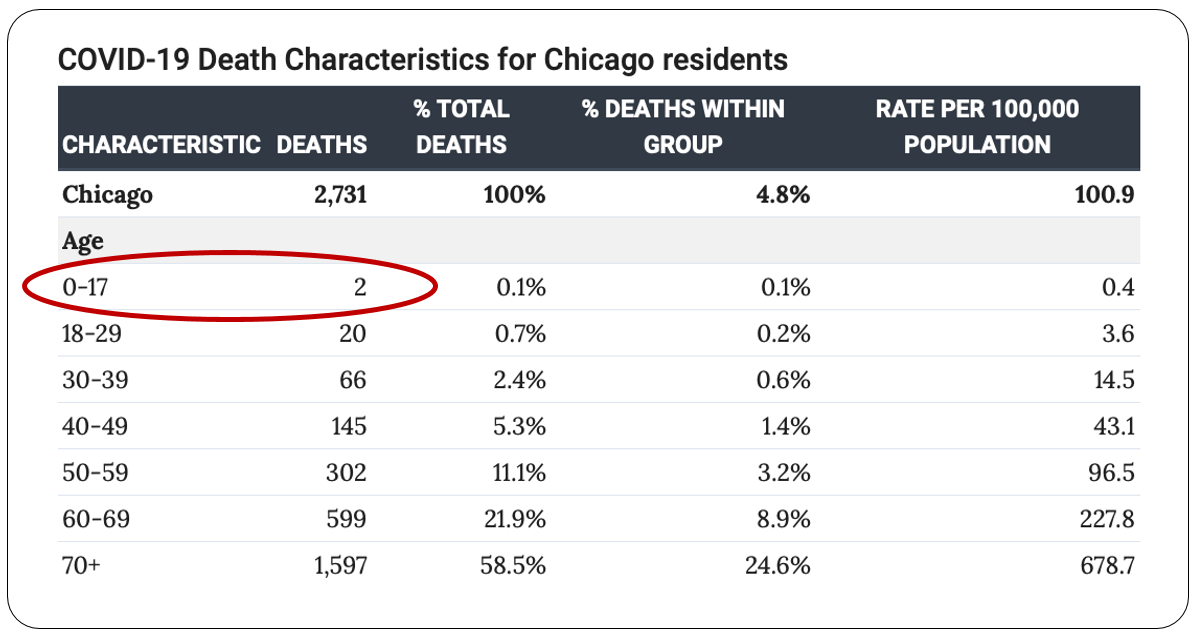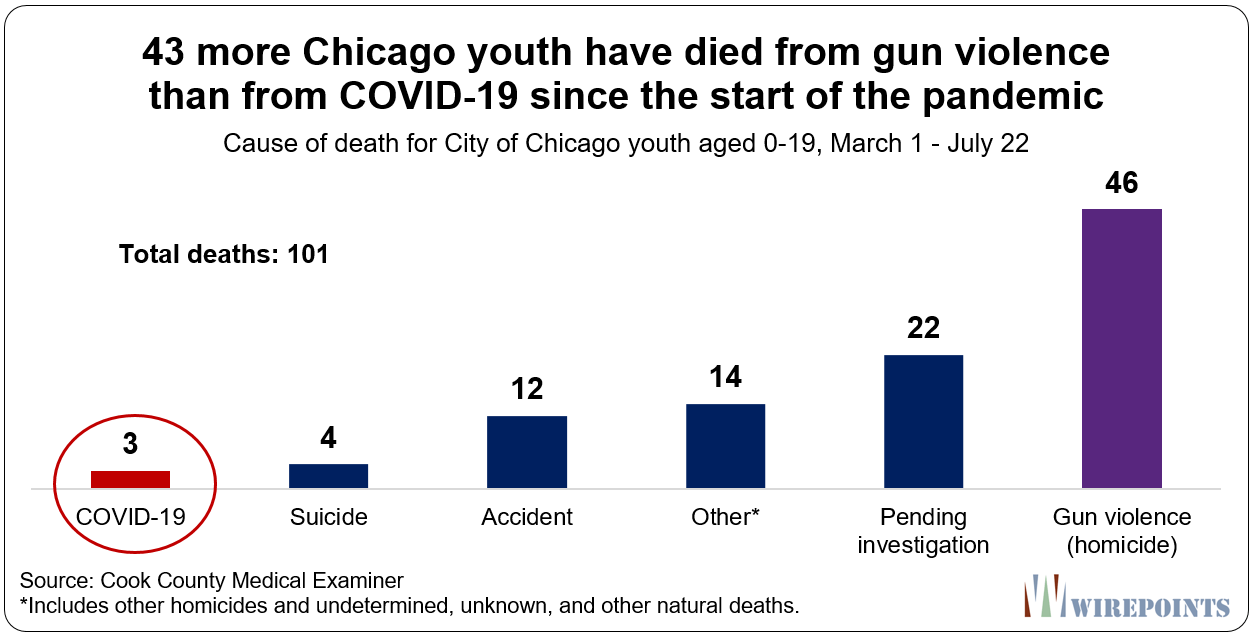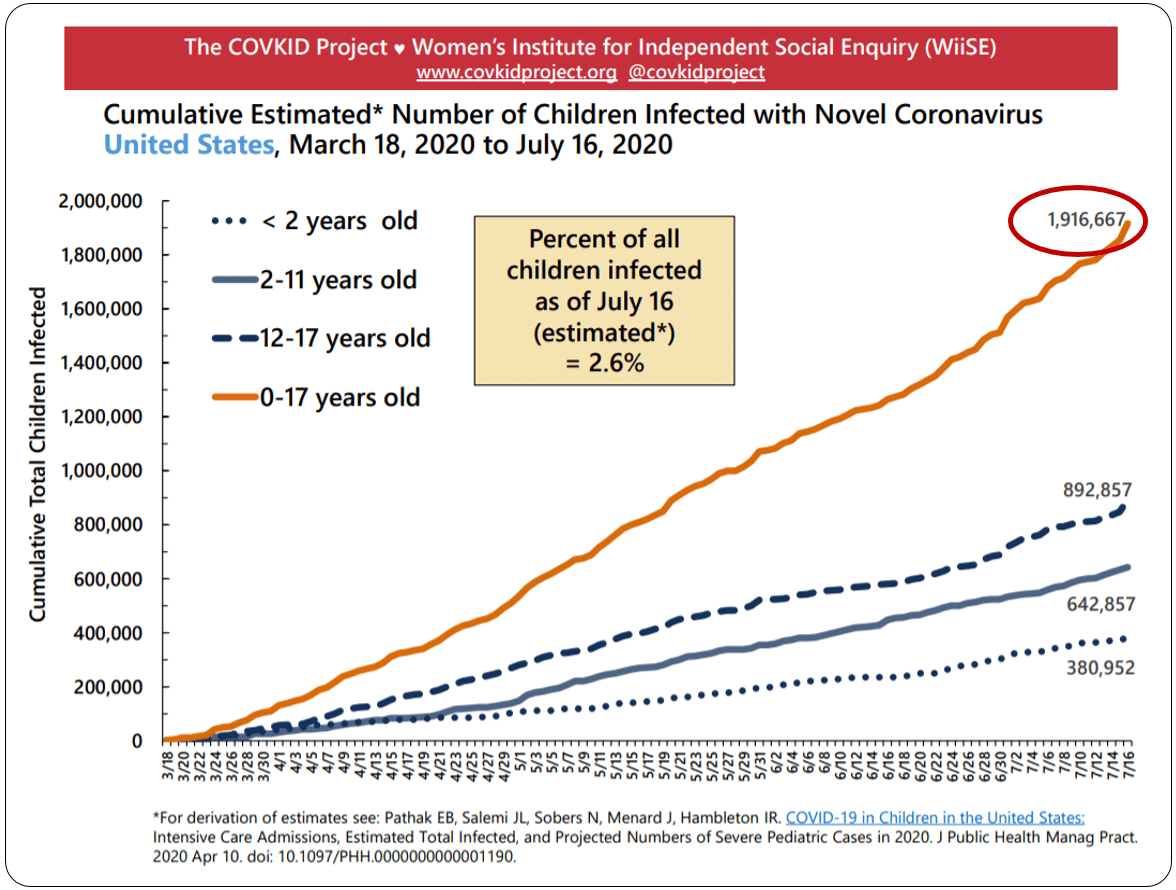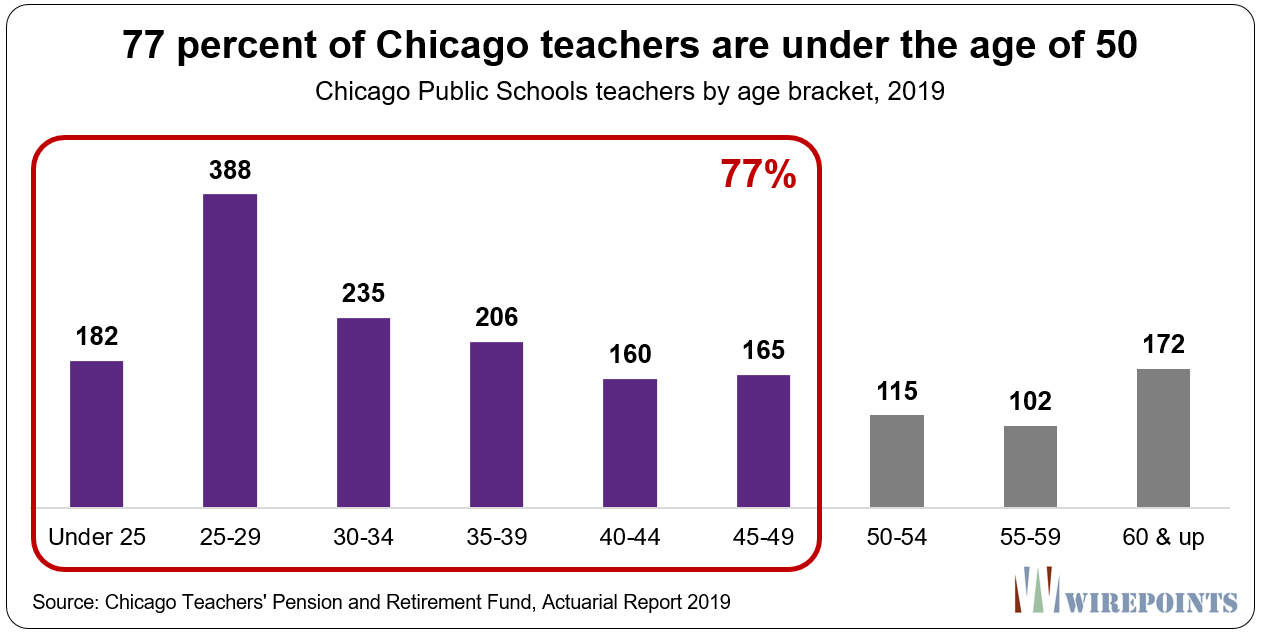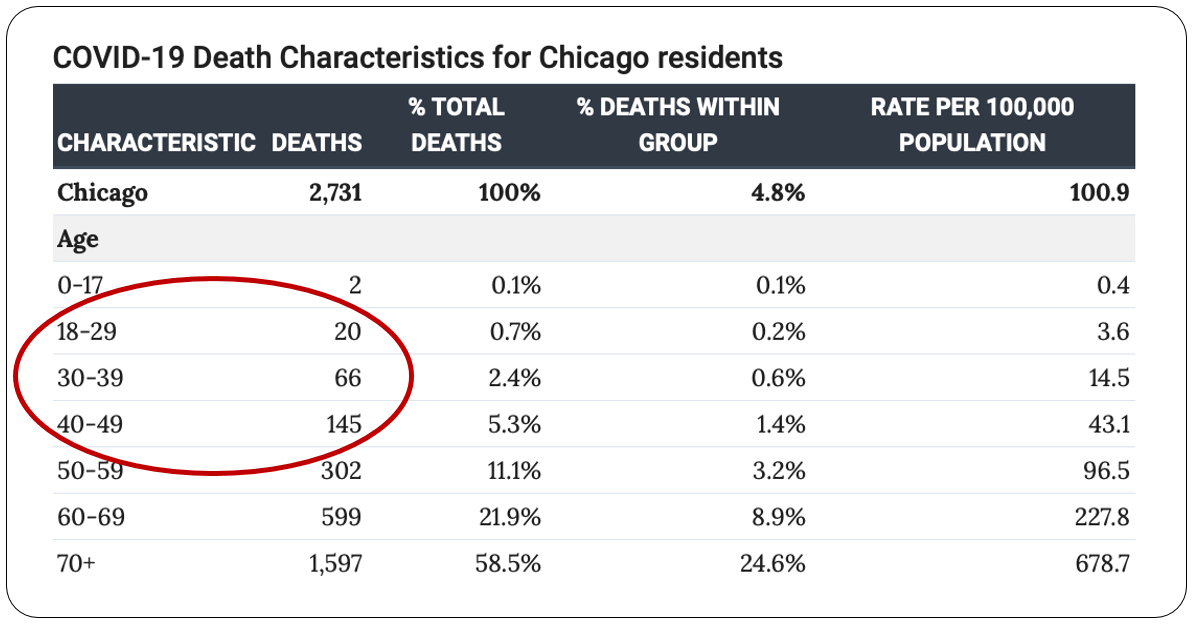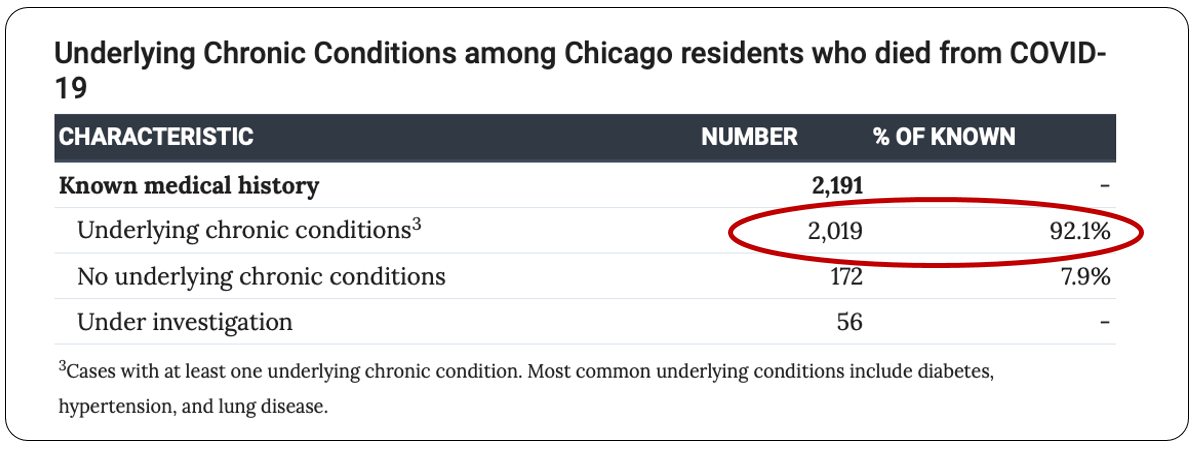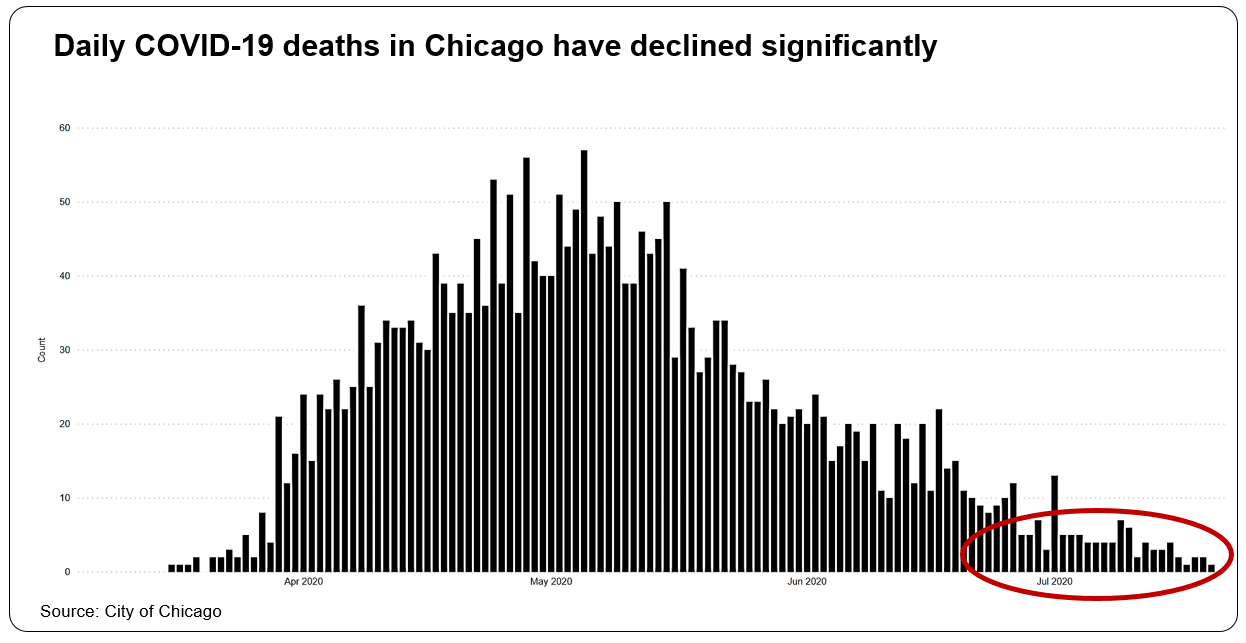Link: https://www.zerohedge.com/political/7-facts-parents-teachers-should-know-about-risks-reopening-chicago-public-schools
Authored by Ted Dabrowski and John Klingner via Wirepoints.org,
School reopenings have become the next major political football in America, and the opening of Chicago Public Schools is no exception. The Chicago Teachers Union says they don’t want in-school teaching and prefer to maintain online learning, while the school district officials are planning for a hybrid opening.
But how risky is it really for CPS children to return to school? What are the chances of students catching and spreading the virus? What are the chances of them bringing it home? And how risky is a reopening for teachers?
Here are seven facts Chicago parents and teachers should know:
1. Only two Chicago children aged 17 and younger have died from COVID-19 since the virus first appeared, according to the city of Chicago’s latest coronavirus data. While every death is a tragedy, fortunately Chicago’s children haven’t fallen victim to COVID-19.
2. CPS children face more risk from suicide, accidents and gun deaths. Since March 1, the approximate “start” of the coronavirus, nearly 100 Chicago children under the age of 19 have died from causes other than COVID. Four from suicide. Twelve from car- or drug-related accidents. And an outrageous 46 have died from gun violence.
3. One nationwide estimate of the infection fatality rate for children is just 0.004 percent. The Women’s Institute for Independent Social Enquiry says nationwide there have been 317,711 reported cases of children with COVID-19, with 805 intensive care hospitalizations and 77 deaths. However, they estimate there are 1.9 million children infected when taking into account undetected cases. That results in a fatality rate of 0.004 percent.
The actual fatality rate could be even lower once antibody testing can capture just how many children have actually been infected by the virus.
4. More than three-quarters of teachers in CPS are under the age of 50. And 60 percent are under the age of 40. That means as a group they’re at far less risk of suffering death from COVID-19. That’s particularly true when comorbidities are taken into account (next section).
In total, 231 Chicago adults under the age of 50 have died from COVID since March. There are over 34,000 known cases in that age group, but the real number of people infected is certainly far larger. The CDC’s best estimates assume there are 10 times more undetected cases of COVID-19 than detected. Based on their estimate, the group fatality rate for those adults younger than 50 is at 0.064 percent.
5. The risk for teachers is even lower: More than 92 percent of Chicago COVID-19 victims had pre-existing conditions. Age alone should not be the concern for teachers since pre-existing conditions are the determining factor in COVID-19 deaths. Chicago city data shows that over 92 percent of COVID-19 victims in Chicago suffered from one or more comorbidities, i.e., hypertension, obesity, heart disease and diabetes. We’ve provided a full list of Chicago’s COVID-19 deaths and their comorbidities here. The source is the Cook County Medical Examiner’s Office.
Taking comorbidities into account means even fewer teachers are targets of the virus.
For sure teachers with pre-existing conditions will need to consider the risk to themselves and others, but what we know of the virus so far can help mitigate those risks. Limiting activities that require close student/teacher contact, keeping students together in teaching groups, making use of schools’ most-open spaces like gyms – all are sensible ideas. Older students can practice better hygiene and social distancing while younger students, as shown below, catch and transmit the virus at very low rates.
For older teachers and/or those with pre-existing conditions, there is still the option of teaching online for those who need it or even early retirement, if necessary.
6. Students, particularly young children, are low vectors for the virus
Though much more needs to be learned about the interaction of COVID-19 with children, and there is some conflicting evidence, most studies are demonstrating the virus has a limited impact.
For example, Science magazine recently reported “several studies have found that overall, people under age 18 are between one-third and one-half as likely as adults to contract the virus, and the risk appears lowest for the youngest children.”
More surprisingly, it appears parents should be more concerned about giving COVID to their children instead of worrying that children will bring the virus home with them.
The Netherland’s health ministry advises that “Data from the Netherlands also confirms the current understanding: that children play a minor role in the spread of the novel coronavirus. The virus is mainly spread between adults and from adult family members to children. The spread of COVID-19 among children or from children to adults is less common.”
And a recent rapid literature review of pediatric COVID studies concluded:
“Low case numbers in children suggest a more limited role than was initially feared. Contact tracing data from Asia, the USA, Europe and Israel have all demonstrated a significantly lower attack rate in children than adults, including testing of asymptomatic household contacts on both PCR and serology. Coupled with low case numbers would suggest that children are less likely to acquire the disease…Limited data on positive cases in schools have not demonstrated significant transmission, except within adolescent populations. Studies of younger children in schools have found low rates of transmission, but with very low case numbers.”
– Boast A, Munro A, Goldstein H. An evidence summary of Paediatric COVID-19 literature, Don’t Forget the Bubbles, 2020.
7. Chicago COVID-19 deaths have collapsed to an average of just 2 a day over the last week.
Once a hotspot nationally, Chicago deaths have collapsed from nearly 50 a day in early May to about 2 a day in the last week. The city is at a level consistent with many European countries when they began to successfully reopen schools.
In fact, Chicago and New York City are now the only two major cities in the country that have an average daily infection rate of less than 5 percent – epidemiologists’ generally-accepted public health threshold for keeping COVID-10 under control.
* * *
COVID-19 is scary, but until and only if the virus changes targets, kids are more at risk from violence, accidents and from not being in school.
Keeping schools shut has had an increasingly negative impact on children’s lives. More and more evidence shows that children missing school is leading to isolation, anxiety, the loss of critical development time, and not to mention, lost instructional time – remote learning didn’t work. There’s also the increased risk of unreported child abuse and teen suicide.
Younger children in particular are ill-served by remote learning, according to a new report issued by the National Academies of Science, Engineering and Medicine that recommends students return to the classroom. That report echoes the opinion of the American Academy of Pediatrics, which recommends that “all policy considerations for the coming school year should start with a goal of having students physically present in school.”
The science and data of COVID-19 in Chicago agree.
 News Chicago Business, Info & Events
News Chicago Business, Info & Events
